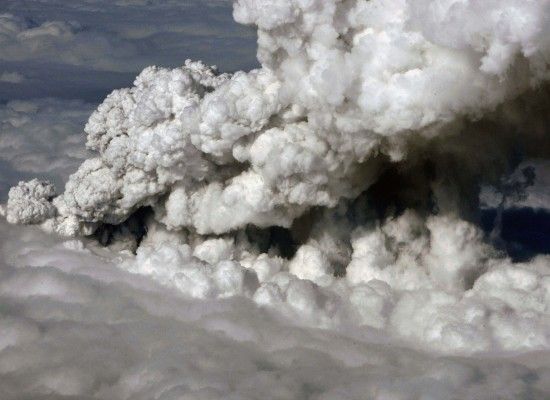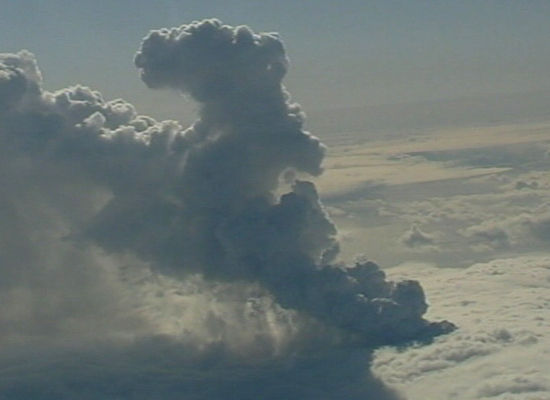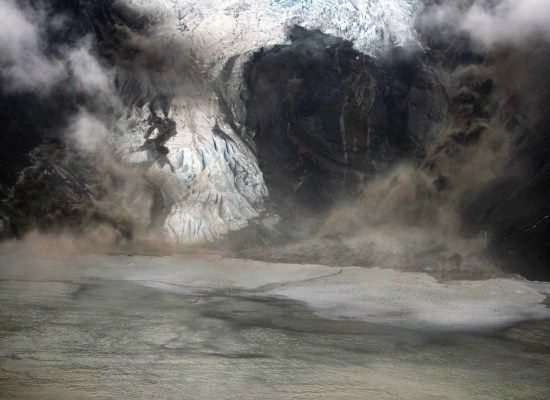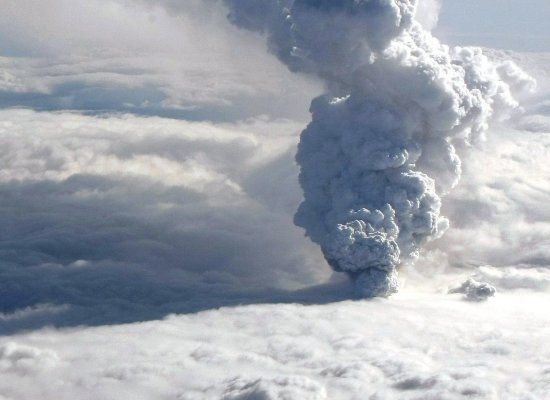 Approximately 16,000 flights have been grounded throughout Europe since a massive ash cloud has been released from a volcanic eruption in Iceland. All flights over Great Britain, Ireland, Norway, Sweden and Finland have been cancelled. Flight cancellations on such a massive scaled haven't occurred since the 9/11 terrorist attacks of 2001. Thousnads and thousands of people have since been stranded and it isn't known when the ash cloud will subside. The current airspace effected is some of the busiest in the world. An Iceland scientist speculated that the delay in air travel could be ongoing for days or weeks. The ash rose to between 20,000 feet and 36,000 feet (6,000 meters and 11,000 meters) and is hanging over the Atlantic Ocean near flight paths for most east coast American to European routes. The British air traffic service cancelled all flights, including all flights from Heathrow Airport, except non-emergency until yesterday morning - 7 a.m. (0600GMT, 2 a.m. EDT) Friday. Aviation authorities in Ireland, Denmark, France, Switzerland, Holland, Norway, Sweden and Belgium also closed their respective air spaces, as the ash cloud made its way south and east across Britain. American airlines also cancelled many flights to Europe while delaying others, while the Federal Aviation Administration was trying to redirect flights around the enormous cloud of ash.
Approximately 16,000 flights have been grounded throughout Europe since a massive ash cloud has been released from a volcanic eruption in Iceland. All flights over Great Britain, Ireland, Norway, Sweden and Finland have been cancelled. Flight cancellations on such a massive scaled haven't occurred since the 9/11 terrorist attacks of 2001. Thousnads and thousands of people have since been stranded and it isn't known when the ash cloud will subside. The current airspace effected is some of the busiest in the world. An Iceland scientist speculated that the delay in air travel could be ongoing for days or weeks. The ash rose to between 20,000 feet and 36,000 feet (6,000 meters and 11,000 meters) and is hanging over the Atlantic Ocean near flight paths for most east coast American to European routes. The British air traffic service cancelled all flights, including all flights from Heathrow Airport, except non-emergency until yesterday morning - 7 a.m. (0600GMT, 2 a.m. EDT) Friday. Aviation authorities in Ireland, Denmark, France, Switzerland, Holland, Norway, Sweden and Belgium also closed their respective air spaces, as the ash cloud made its way south and east across Britain. American airlines also cancelled many flights to Europe while delaying others, while the Federal Aviation Administration was trying to redirect flights around the enormous cloud of ash. Hundreds of people in Iceland have fled rising floodwaters since Wednesday, when the volcano under the Eyjafjallajokull (ay-yah-FYAH'-plah-yer-kuh-duhl) glacier erupted for the second time in less than a month. Rivers rose by 10 feet or 3 metres by Wednesday night as water poured down the mountainside, which divided the country's main roadway in half. According to scientists, the eruption was 10 times more powerful than the one in March. Flooding had subsided by Thursday which left new channels in Iceland's landscape, however ash and steam was still coming from the volcano and being blown towards Britain. Einar Kjartansson, a geophysicist at the Icelandic Meteorological Office said:
It is likely that the production of ash will continue at a comparable level for some days or weeks. But where it disrupts travel, that depends on the weather. It depends how the wind carries the ash.
 Volcanic ash contains microscopic yet extremely abrasive particles which are not only a serious impediment but extreme danger for planes as they not only affect visibility, but shut down engines as they will get sucked in. Volcanic ash also obfuscates pitot tubes, which supply crucial instruments such as air speed indicators. The particles can also stick to engine blades and form a glassy substance which can result in engines surging or stalling. In addition, ash can damage all forward-facing surfaces on an aircraft, like cockpit windshields, the leading edges of wings, landing lights and air filters for passenger cabins.
Volcanic ash contains microscopic yet extremely abrasive particles which are not only a serious impediment but extreme danger for planes as they not only affect visibility, but shut down engines as they will get sucked in. Volcanic ash also obfuscates pitot tubes, which supply crucial instruments such as air speed indicators. The particles can also stick to engine blades and form a glassy substance which can result in engines surging or stalling. In addition, ash can damage all forward-facing surfaces on an aircraft, like cockpit windshields, the leading edges of wings, landing lights and air filters for passenger cabins.




No comments:
Post a Comment
Note: Only a member of this blog may post a comment.